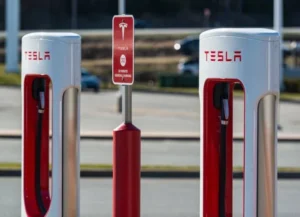The Supreme Court overturned a Trump-era ban on bump stocks, a firearm accessory that enables semiautomatic weapons to fire rapidly like machine guns, and was involved in the deadliest mass shooting in modern U.S. history.
The conservative majority on the court determined that the Trump administration did not adhere to federal law when it reversed its position and prohibited bump stocks following the 2017 Las Vegas massacre, where a gunman used assault rifles to fire over 1,000 rounds into a crowd, resulting in 60 deaths and hundreds of injuries.
Justice Clarence Thomas, in a 6-3 majority opinion, argued that a semiautomatic rifle equipped with a bump stock does not qualify as a machine gun because it does not fire more than one shot per trigger pull.
Thomas clarified that a bump stock simply reduces the time between individual trigger functions, as illustrated in his opinion of firearms’ firing mechanisms. Conservative justices John Roberts, Samuel Alito, Neil Gorsuch, Brett Kavanaugh, and Amy Coney Barrett joined Thomas.
Alito also emphasized in a brief separate opinion that Congress has the authority to amend the law to classify bump stocks as machine guns if desired.
In her dissent, Justice Sonia Sotomayor highlighted the Las Vegas gunman’s actions. She emphasized that the gunman caused extensive casualties not by quick trigger finger alone but by using bump stocks.
Sotomayor expressed disappointment that Congress must intervene but hoped that legislative action would follow. The Supreme Court’s decision followed a challenge from a Texas gun shop owner who argued that the Justice Department had incorrectly labeled bump stocks as illegal machine guns.
The Biden administration supported the Bureau of Alcohol, Tobacco, Firearms and Explosives decision on bump stocks, which can enable firearms to fire at high rates, marking a significant recent gun case before the Supreme Court. A conservative majority previously expanded gun rights in 2022 and is now considering another case challenging a federal law aimed at restricting access to guns for individuals under domestic violence restraining orders.
The bump stock case focused more on whether the ATF exceeded its authority than on Second Amendment rights.
Liberal justices suggested that anything capable of rapid and extensive firing should be classified as a machine gun under federal law. In contrast, conservative justices questioned why Congress had not acted to ban bump stocks and the implications of the ATF’s reversal a decade after deeming the accessories legal.
The Supreme Court took up the case following conflicting rulings in lower courts over bump stocks, invented in the early 2000s.
During the administrations of Republican President George W. Bush and Democrat Barack Obama, the ATF determined that bump stocks did not convert semiautomatic weapons into machine guns.
However, under pressure from Trump after the Las Vegas and Parkland shootings, the agency reversed its stance.
Bump stocks replace a rifle’s shoulder stock and harness the recoil energy to allow rapid firing by bumping the trigger against the shooter’s stationary finger.
Despite bans in fifteen states and the District of Columbia, the plaintiff, Texas gun shop owner and military veteran Michael Cargill argued against the ban with support from the New Civil Liberties Alliance, funded by conservative donors including the Koch network. Plaintiffs acknowledged the rapid-fire capability of bump stocks but argued that they differ because the shooter must exert more effort to maintain firing. Government attorneys countered that the effort required is minimal and legally irrelevant.
The Justice Department cited a thorough reevaluation prompted by the Las Vegas shooting in support of the ATF’s revised stance on bump stocks.
According to court documents, approximately 520,000 bump stocks were in circulation during the 2019 ban, requiring surrender or destruction and resulting in an estimated combined loss of $100 million.












